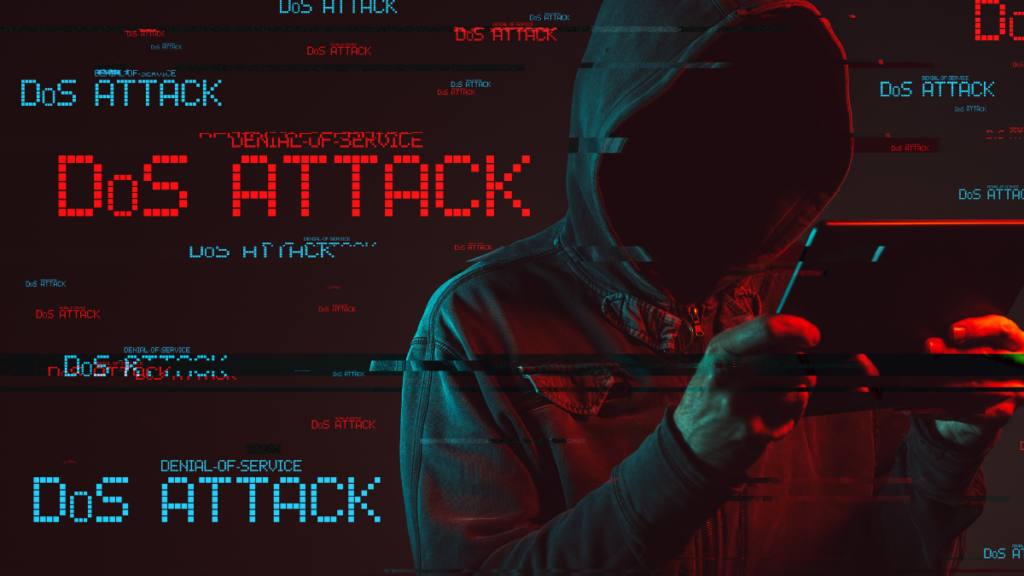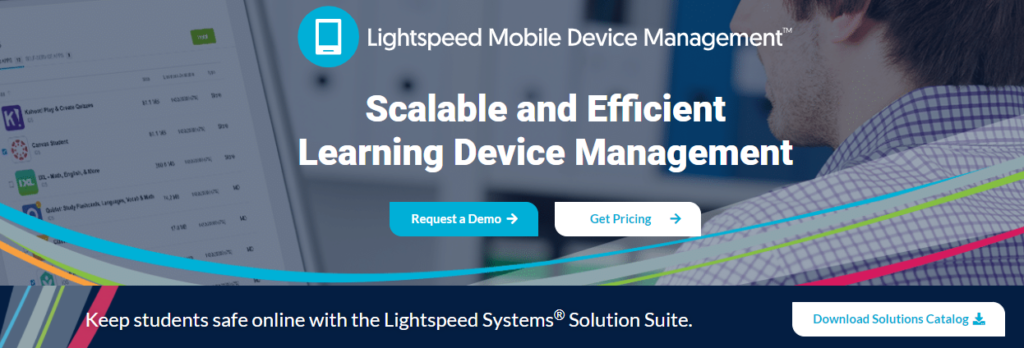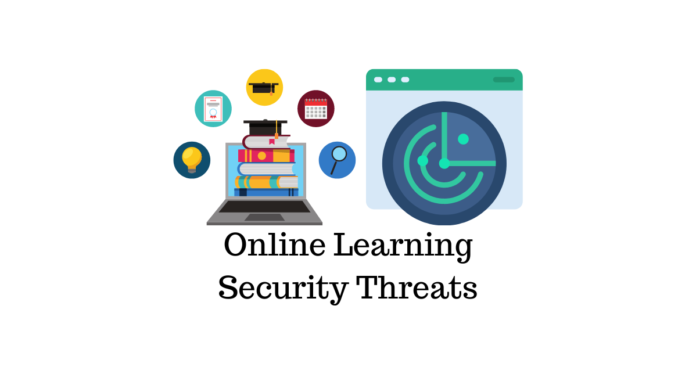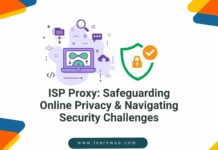Last updated - June 6, 2022
In one sense, it’s fantastic that educational resources and even entire classrooms are now available online. The digital revolution means that schools and colleges all over the world have been able to continue giving lessons to students throughout the COVID-19 pandemic, with online learning platforms very much pointing towards the future.
However, sustained online activity comes with new risks, too, especially in the face of cybersecurity.
Indeed, teaching in the online classroom means that educators must face head-on the dangers of cybersecurity, which each year come in ever more advanced forms. Educators must not only work to protect the institution, but also the student’s data. Worse still, research has shown that – dismally – education is the most susceptible industry to cyber attacks.
In this article, we take a look at the different online cybersecurity threats that educational systems face, as well as what you can do to mitigate them.
Types Of Cybersecurity Threats Faced by the Online Learning Sector
The online learning sector is facing up to numerous types of attacks. The most common ones in 2021 are:
DDoS Attacks
DDoS attacks stands for Distributed Denial of Service. It’s important to be aware of these types of attacks because they’re the most popular.
And the reason they’re the most common is because a DDoS attack is also the easiest way for an online attacker to infiltrate an online learning system.


With a DDoS attack, the perpetrator seeks to wreak havoc with your network’s normal traffic by overwhelming its infrastructure with a huge volume of traffic. When your systems are overwhelmed, your students will be unable to access the intranet and other important networks needed to study and learn.
Data Theft
All educational institutions possess sensitive data, be that a student’s personal data or a member of staff’s personal data. As such, attackers will see this type of information as being super valuable, and they may target it with the aim of stealing it and selling it on. However, they may also hold it to ransom so as to extort money, and this is known as ransomware.
Phishing scams
Phishing scams have made their way into the online learning sector because, despite their being nothing new, they’re incredibly simple to carry out. The scammer will send an email to a user with the intention of tricking them into clicking a link that will trigger an attack or compromise the user’s details.
Phishing scams especially target vulnerable students who aren’t aware they could be scammed while learning.
Control Who Has Access to Sensitive Data
A lot of data is at risk for educational institutes, including the personal data of the student, as well as the personal data of teachers, admin staff and even the school’s research hub. This data may be stolen by cyber attackers and sold on to places for nefarious means, including the dark web.
As such, it’s really important that you take measures to control who has access to sensitive data. For example, you can implement two-factor authentication for system areas like web admin consoles and user portals, while restricting access to only specific users.
Vet All Third Party Providers
Educational institutions need to vet all third party providers comprehensively to ensure that, not only are said providers legitimate but also that they take safety and security as seriously as the school itself.
This is really important to note because studies have shown that a large portion of data breaches lies at the hands of third parties.
So as well as identifying who poses the most risk to your data, you also need to apply the exact same level of diligence to any vendors you work with. You need to look closely for any security gaps they might have and then assess which ones need to be prioritized.
You can start by drawing up a list of all the third parties you work with. Then, take a look at how you use them. Ergo, are you sharing data with them and which facilities of yours do they have access to? How secure are they? For example, a chat API lets you build a chat that has end-to-end encryption which helps to protect student’s messages, images and files.
Next, divide your vendors up into categories according to their level of risk – high, mid or low. You can now assess them individually, with the results giving you insights into what you need to do next.
You also have the option of contacting any vendors you currently work with (and especially future vendors) and asking them about their security measures.
Educate Your Students & Staff
One of the best ways to mitigate cybersecurity threats is to educate your students and staff so that they know what to look out for and what course of action to take when it comes to cyber attacks.
Naturally, a student can’t thwart all malicious attacks by themselves, but you can make them aware of – for example – what a phishing scam looks like. Since phishing scams are one of the easiest ways for a cyber criminal to deceive a student and steal data, it’s key that you work with your students to put together a security awareness culture at your institution that will reduce risk.
This includes:
- Showing students and staff what a suspicious email and link looks like (an email may ask the student to confirm personal information or it could be offering them something that seems too good to be true)
- Guiding them through the steps that should be taken if they spot a suspicious email (notify staff)
- Updating your email security
- Implementing advanced protection for each endpoint
Regularly Back Up Your Data
As we saw earlier, ransomware attacks are on the rise. Schools are especially vulnerable to them because the attackers know that the institution requires a huge amount of student data in order to keep functioning. The attacker will steal the data and hold it until the ransom is paid.


While it’s not always possible to protect your data 100% of the time, you can at least stay one step ahead of the attackers before constantly backing up your data.
Here are some tips:
- Back up your essential data first and foremost (data that your institution simply can’t function without)
- Keep data backups away from staff and your main computer network (store on a hard drive, for example)
- Consider using cloud storage
How often should you back up your data? A good rule of thumb is to back up sensitive data at least once a week. However, if possible we recommend that you back it up every 24 hours.
Beef Up Mobile Security
Mobile devices including tablets and smartphones are regularly used by students and staff for online learning. However, they come with multiple risks precisely because of their increased usage. Hackers know students will be using them to access important and sensitive data, and this makes them a high priority target – especially since the devices will more than likely be connected to the internet.
To mitigate the risk to mobile devices, it’s a smart idea to invest in mobile device solutions. For instance, you can use a tool like Lightspeed Mobile Manager, an MDM that was made specifically for schools. It integrates with both Windows and Apple programs, it offers multi-OS support, and it lets you remotely control every single device with one click.


Essentially, a good mobile device solution for online learning should be made specifically for schools so that features – such as a classroom feature set – are geared towards this end.
Conclusion
Thanks to the digital revolution, schools are able to work remotely when face-to-face teaching isn’t possible, but it’s important that you don’t allow cyberattacks to delay learning.
As well as using the information and advice in this article, it’s also a good idea to keep on top of fresh and innovative attacks. Each year, cyber criminals come up with new methods of disabling networks and systems, and it’s only by keeping up with these methods that a school will be able to continue minimising disruption.
Further reading












I’m glad you talked about cybersecurity threats and how you could face different types. Recently, one of my cousins said she needs to start studying from home. I believe my cousin could benefit from reading about cyber security and its importance, so I’ll be sure to share your tips with her! Thanks for the information on how students are prone to cyber-attacks!